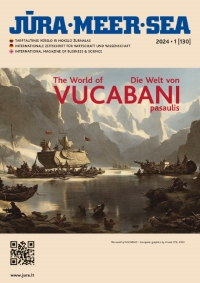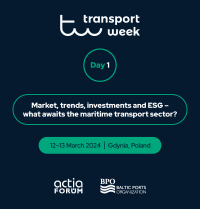A group of transport stakeholder associations, including Community of European Railway and Infrastructure Companies (CER), the European Rail Freight Association (ERFA ), the European Federation of Inland Ports (EFIP) and the European Sea Ports Association (ESPO), have written an open letter to the European institutions highlighting concerns over current budget proposals regarding transport infrastructure.
The letter was addressed to members of the European Commission, European Parliament, and the European Council’s Working Party on Land Transport and Ad-hoc Working Party on European Funding for Strategic Investment.
The full text of the letter is as follows:
Open letter on the Commission proposal for a Regulation establishing a European Fund for Strategic Investments
Brussels, 11 February 2015
The undersigned stakeholder associations highlight the important need for investment in transport infrastructure. In the TEN-T Guidelines, the European Parliament and Member States have agreed on a policy that is to guide decisions as to which transport projects should receive funding as a matter of priority. According to the 2011 Transport White Paper, more than EUR 1.5 trillion will be needed in the period 2010-2030 to develop transport infrastructure to match demand (1). Therefore, we strongly welcome the initiative of “An investment Plan for Europe” and are ready to support all efforts towards a renewed European economic boost through investments in key infrastructure projects.
Nonetheless, we would like to draw attention to three major concerns we have regarding the current proposal:
· The EFSI budget will drastically limit the CEF envelope for grants.
· Investments under EFSI will not follow the TEN-T priorities for funding of transport infrastructure and the prioritization as defined in the Corridor approach.
· The money transferred to the EFSI is not ring-fenced for transport investments.
Of the EUR 8 bn that are to be taken out of the EU budget for the new guarantee fund, EUR 2.7 bn are to come from the transport envelope of the Connecting Europe Facility (CEF), in particular from the headings “Removing bottlenecks, enhancing rail interoperability, bridging missing links and improving cross-border sections”, “Ensuring sustainable and efficient transport systems” and “Optimising the integration and interconnection of transport modes and enhancing interoperability”. This means that the overall sum available for grant funding of transport projects (in non-cohesion countries) is cut by more than 18% by the EFSI proposal. The existing CEF envelopes for financial instruments and transport investments in cohesion countries remain untouched.
The TEN-T Guidelines defined a stringent methodology for the eligibility and priorities of transport infrastructure. During the past year, the Commission, member states and infrastructure managers have jointly worked on corridor work plans that are to identify the priority projects with the highest European added value that should thus be the first recipients of EU funding. However, under the EFSI, any European transport project independent of location and mode of transport can receive funding. This shifts the logic away from the carefully chosen transport priorities of the CEF and TEN-T.
Therefore, the reallocation of financial resources from the CEF budget to the EFSI is much more than an attempt to attract new private resources to projects of European economic and social added value. It is, rather, a policy change that must be assessed thoroughly: other projects will be promoted instead of the ones which were identified as a priority by CEF, at the same time cutting the EU spending capacity for grants to projects of the TEN-T network.
Moreover, the EFSI does not ring-fence money for any particular type of investments. Different sectors ranging from energy, to education and health will be competing for financing. The money transferred from the CEF could thus end up being absorbed by other sectors if these are better able to present mature projects with clear revenue streams.
We therefore ask the decision makers in the EU institutions to take into account the concerns of the undersigned, and to ensure that the money dedicated to transport infrastructure in the Multiannual Financial Framework and the Connecting Europe Facility continues to serve the transport objectives defined in the TEN-T Guidelines.
(1) The completion of the TEN-T network requires about € 550 billion until 2020 out of which some €215 billion can be referred to the removal of the main bottlenecks (Transport White Paper 2011, page 14).
The signatories:
The Community of European Railway and Infrastructure Companies (CER) brings together more than 70 European railway undertakings and infrastructure companies. CER represents the interests of its members towards the European institutions as well as other policy makers and transport actors. CER’s main focus is promoting the strengthening of rail as essential to the creation of a sustainable transport system which is efficient, effective and environmentally sound. For more information, see www.cer.be.
For further information, please contact: This email address is being protected from spambots. You need JavaScript enabled to view it..
The European Barge Union (EBU) represents the majority of the inland navigation freight and passenger carrying industry in Europe. Its members are the national associations of barge owners and barge operators as well as international associations in the field of inland navigation and related areas.
EBU’s main objective is to represent the interests of the inland shipping industry and Rivers-See shipping industry at a Pan-European level and to contribute to the development of a sustainable and efficient Pan-European transport system. “
The European Federation of Inland Ports (EFIP) brings together more than 200 inland ports and port authorities in 18 countries of the European Union, Switzerland and Ukraine. Since 1994, EFIP has been the voice of the inland ports in Europe. EFIP highlights and promotes the role of inland ports as multi-modal hubs. For more information, please contact: This email address is being protected from spambots. You need JavaScript enabled to view it., www.inlandports.eu.
EIM, the association of European Rail Infrastructure Managers, was established in 2002 to promote the interests and views of the independent infrastructure managers in Europe, following liberalisation of the railway market. It also provides technical expertise to the appropriate European bodies such as the European Railway Agency. EIM’s primary goal is promoting growth of rail traffic and the development of an open sustainable, efficient, customer orientated rail network in Europe.
ERFA - European Rail Freight Association - represents new entrants, i.e. all those operators who want open access and fair market conditions, and sustains their role of pushing forward the development of a competitive and innovative railway market. In 2015, ERFA represents 34 members from 16 countries across Europe.
The European Shippers’ Council (ESC) represents the freight transport interests (by all modes of transport) of business in Europe (manufacturers, retailers or wholesalers).
The European Skippers’ Organisation (ESO) looks after the interests of the private inland shipping entrepreneurs on European level. The Council of ESO is composed of representatives and entrepreneurs of Belgian, Dutch, French, German and Polish IWT branch organisations.
Over the years, ESO has occupied itself in the interest of the independent entrepreneurs on various matters, such as market observation and regulation, fleet renewal, waterway bottlenecks, promotion, crew regulation, training and certification, accommodation, environment and emissions, River Information Services, etc.
ESO - since 1975 - participates in many working and advisory groups of CCNR and EC.
Since 1993, the European Sea Ports Organisation (ESPO) represents the port authorities, port associations and port administrations of the seaports of the Member States of the European Union and Norway. ESPO has also observer members in several neighbouring countries to the EU. ESPO ensures that seaports have a clear voice in the European Union. The organisation promotes the common interests of its members throughout Europe and is also engaged in dialogue with European stakeholders in the Port and Maritime sector. For more information, please contact: This email address is being protected from spambots. You need JavaScript enabled to view it., www.espo.be, Twitter: @ESPOSecretariat
Founded in 1993, FEPORT represents the interests of large, multinational terminal operators and stevedoring companies performing operations and carrying out activities in the seaports of the European Union. FEPORT’s aim is to promote the interests of its members and to maintain constant dialogue with all EU institutional and non-institutional stakeholders.
Inland Navigation Europe (INE) is the European platform of national & regional waterway managers and promotion bureaux. Neutral and without commercial interests, INE sees major opportunities to contribute to sustainable transportation by moving more goods by water in EU regions and cities with accessible and navigable rivers and canals.
Founded in 1950, the UIP – International Union of Wagon Keepers, with its seat in Brussels, is the umbrella association of national associations from fourteen European countries, thus representing more than 250 keepers with approximately 180.000 freight wagons, performing 50 % of the rail freight tonne-Kilometres throughout Europe. The UIP represents the members’ concerns at international level. By means of research, lobbying and focused cooperation with all stakeholders and organisations interested in rail freight transportation, the UIP wants to secure on the long term the future of rail freight transport.
Founded in 1970, the International Union for Road-Rail Combined Transport (UIRR) represents the interests of European road-rail Combined Transport Operators and Transhipment Terminal Managers. Road-Rail Combined Transport (CT) is a system of freight forwarding which is based on efficiently and economically inserting electric rail into long-distance (road) transport-chains through the use of intermodal loading units (ILU).
UNIFE is the association representing the European rail manufacturing and supply industry at the EU and international level and gathers 80 member companies involved in the engineering, design, manufacture, and maintenance of rail transport systems, subsystems and related equipment. UNIFE also brings together 15 national rail industry associations of European countries.
For further information, please contact: This email address is being protected from spambots. You need JavaScript enabled to view it.
ESPO (European Sea Ports Organisation)










